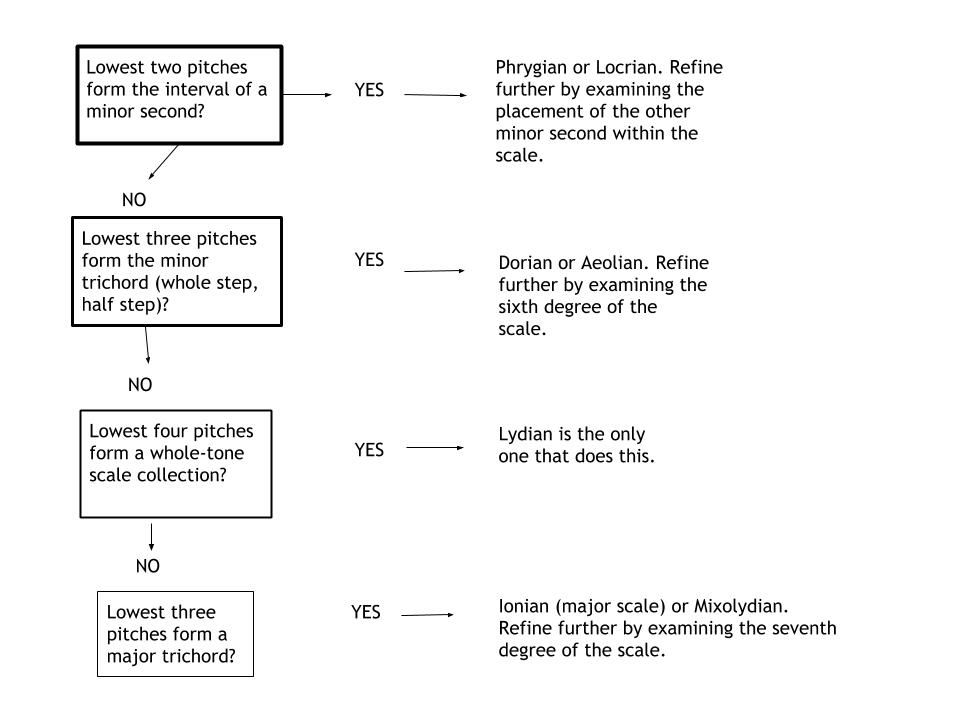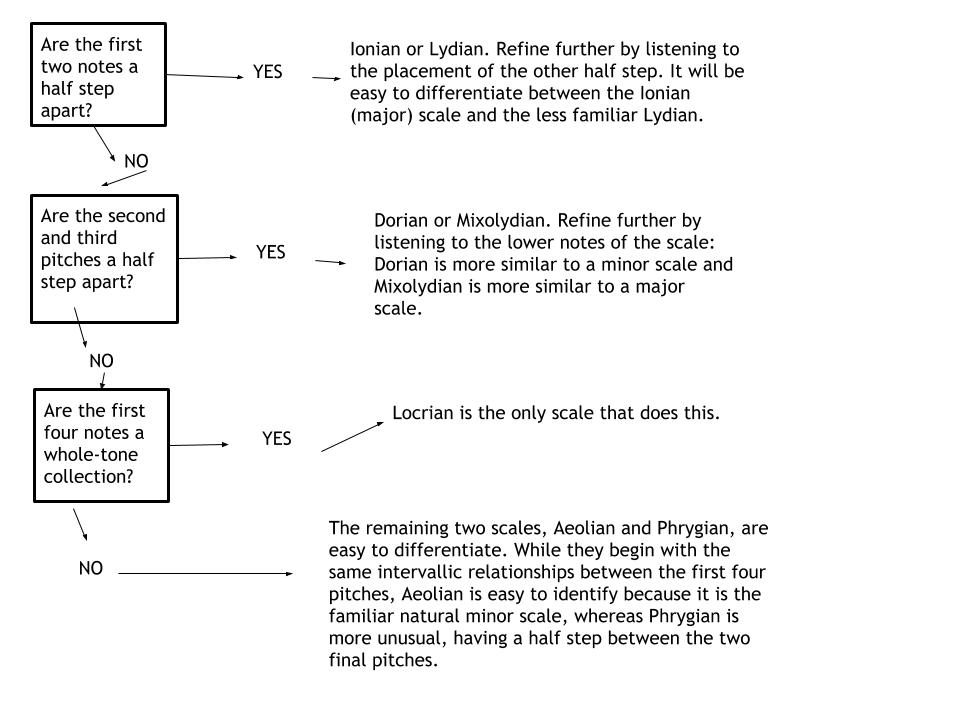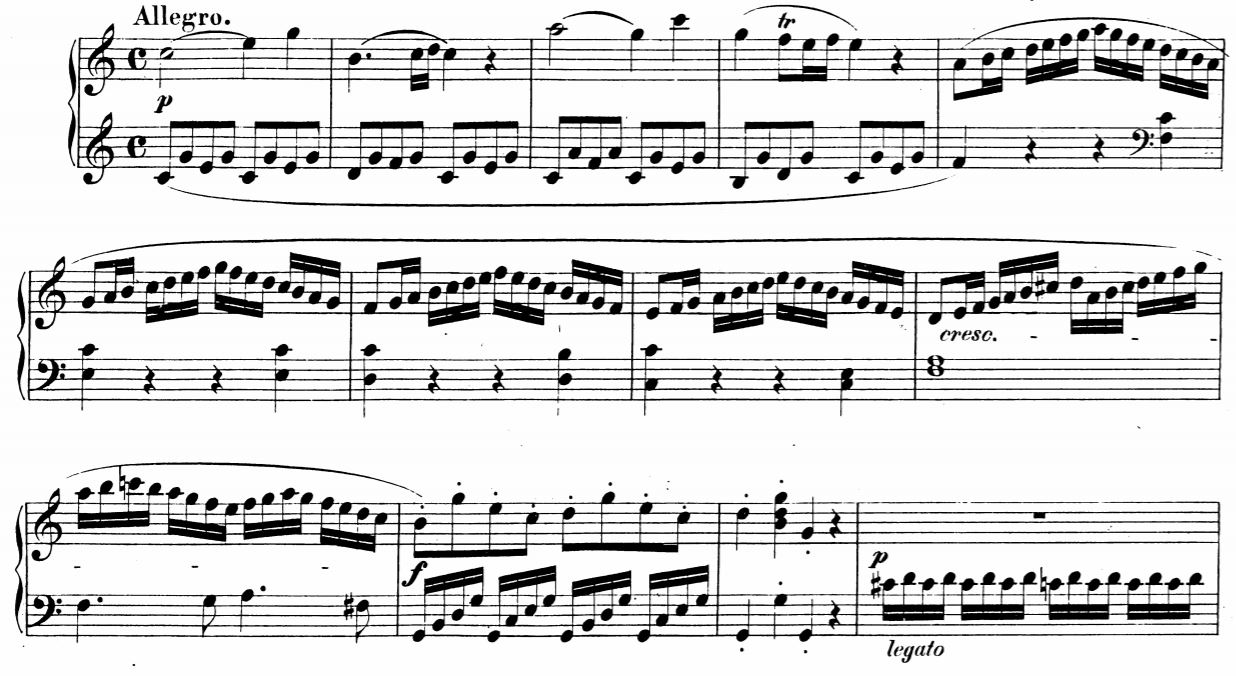Integrated Aural Skills 2018-19
Ear Training - Modal Scales, Ascending and Descending Motion
Modal Scales
As with all topics in ear training, the key to successful identification and notation of examples played in class and in tests is having a step-by-step procedure. When you identify a modal scale, you can spare yourself a lot of work by having a method for grouping certain scale IDs so that you can exclude wrong answers immediately, leaving you more time to focus on identifying and notating the right ones.
Flow Chart for Modal Scales in Ascending Motion
Write out the modal scales, sing them, and play them on the piano. This gives you auditory, visual, and tactile methods for recognizing, internalizing, and building fluency in these scales. Notice how the patterns of whole and half steps differ between each of the modes. For ascending modal scales, this flow chart may help you to sort through information on your journey towards the right answer.

The Next Step
Two Methods
- The “Find the Key Signature” Method Once you have identified the scale, you should ascertain what key it’s in. For example, if you identify a Mixolydian scale, and the starting pitch is A, that means A is the fifth degree of the key of the key signature. Counting backwards, that gives you D. The key signature of D major is, of course, two sharps. Therefore, when you write out a scale with the starting pitch A, you’ll add a C-sharp and an F-sharp. By using this method, you can avoid notation errors.
- The “First Pitch = do” Method Alternatively, you can remember which scale degrees to alter. So if you identify a Mixolydian scale whose starting pitch is A, you’ll recall that a Mixolydian scale is like a major scale whose seventh degree is lowered to te. Therefore, there won’t be a G-sharp – the seventh degree is G-natural.
Flow Chart for Modal Scales in Descending Motion
Many learners find it more difficult to identify scales when they’re presented in descending motion. While you can certainly use the first flow chart to identify descending modal scales, the second chart will also help you to sort through information.

Writing, Singing, and Piano Practice
As always, it is good to practice notating, playing, and singing all theoretical concepts. Experiment with making up songs based on the modal scales! The below example jumps from the Ionian to the Phrygian to the Mixolydian scale before a final cadence in the tonic key.

At the piano, sightread the melodic line from Mozart’s Piano Sonata in C Major K. 545. Notice Mozart’s use of the Aeolian, Mixolydian, Lydian, Phrygian, and Dorian modes. How do they move the melody and harmony along?
